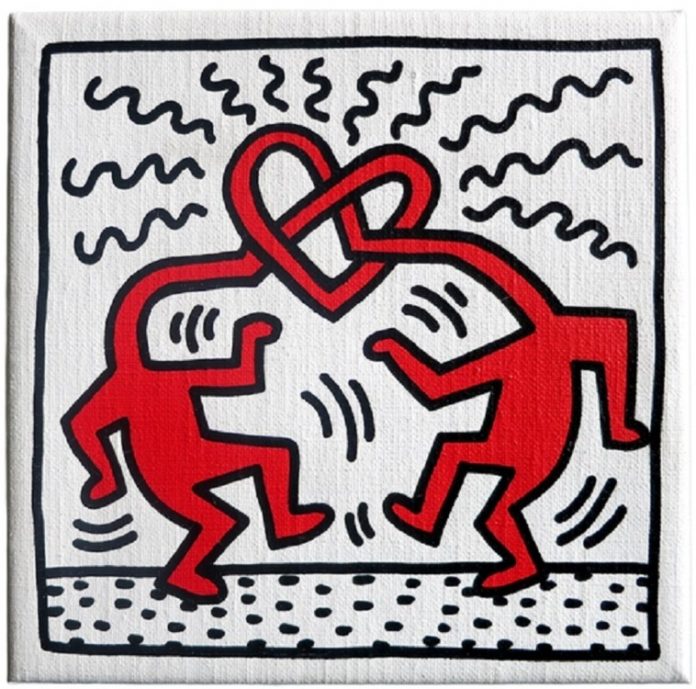American street art artist figure Keith Haring is one of the few contemporary artists who has penetrated the subconscious of the general public. During his short life, Haring created many works both on the street and in the studio.
Haring’s classic colorful figures have become an iconic and instantly recognizable symbol in popular culture. He became famous for his chalk drawings in subway stations and iconic street art in the early 1980s. Much of Haring’s work revolved around the themes of politics, sexuality, war, religion, and AIDS.
Keith Haring was friends with other emerging artists of the early 1980s, including Jean-Michel Basquiat, Futura 2000, Kenny Scharf, and Andy Warhol, who later became heroes of his work. Haring is deservedly named one of the most iconic figures in the New York art scene in the 1980s. His artistic legacy remains both visually appealing and socially significant.

Keith’s creative style is the absence of any style. He painted his experiences. Shy bespectacled and pop art genius Keith Haring was born on May 4, 1958, in Pennsylvania. The story of his life fits into the idea of the life of the genius of pop art: he was born, lived, worked, was a homosexual, and died early from AIDS. At the age of 20, Keith fled to New York, where Andy Warhol, Yoko Ono, Madonna, Timothy Leary, William Burroughs, Jean-Michel Basquiat, and drugs were already waiting for him.
Haring became famous after his work appeared on the walls of the New York subway in the early 80s. Later, in 1986, he opens his Pop Shop and promotes his recognizable characters by printing them on T-shirts, posters, badges, bicycles. In general, the life story of Keith Haring is about how much you can do in just 32 years of life.
Keith Hering was and remains an idol for many even now, although thirty years have passed since his death.
SUBWAY DRAWINGS

These chalk drawings on matte black paper, which Haring spotted on empty billboards, were his first steps to recognition. During that period, he made a colossal number of drawings. Sometimes it reached 40 works a day.
POP SHOP EDITIONS, 1986

Perhaps his most recognizable work, these silk-screen printed figurines were created by Haring for the Pop Shop, with the aim of bringing his work to the public. They could be seen on things like T-shirts or magnets and cemented Haring’s success and made him a household name.
BERLIN WALL MURAL, 1986

This temporary piece was painted on the west side of the Berlin Wall several years before its fall. Haring worked on it during the day, and the next morning his work was painted over.
RADIANT BABY, 1990

Radiant Baby originates in the drawings from the subway and becomes an iconic image. It is revived in later works of various formats and colors, and also becomes part of the Icons series, paying tribute to one of the artist’s most recognizable works.
ONCE UPON A TIME, 1989

Haring, through his work, has sought to draw public attention to the seriousness of the disease and to silence the problems of AIDS patients. Haring created a provocative work called Once Upon A Time in the men’s room of a building in New York.
TUTTOMONDO, PISA MURAL, 1989

This is Haring’s last large-scale mural, painted on the wall of the Church of San Antonio, commissioned by the city of Pisa, Italy. The painting symbolizes harmony in the world.
BOWERY MURAL

This work is his first experience in large-scale painting.
A PILE OF CROWNS FOR JEAN-MICHEL BASQUIAT, 1988

This picture was born in 1988. Basquiat and Haring played key roles in New York’s street culture, and their social activism helped to change the public perception of street art.
DANCING DOG, 1982

UNTITLED (LOVE), 1989


























